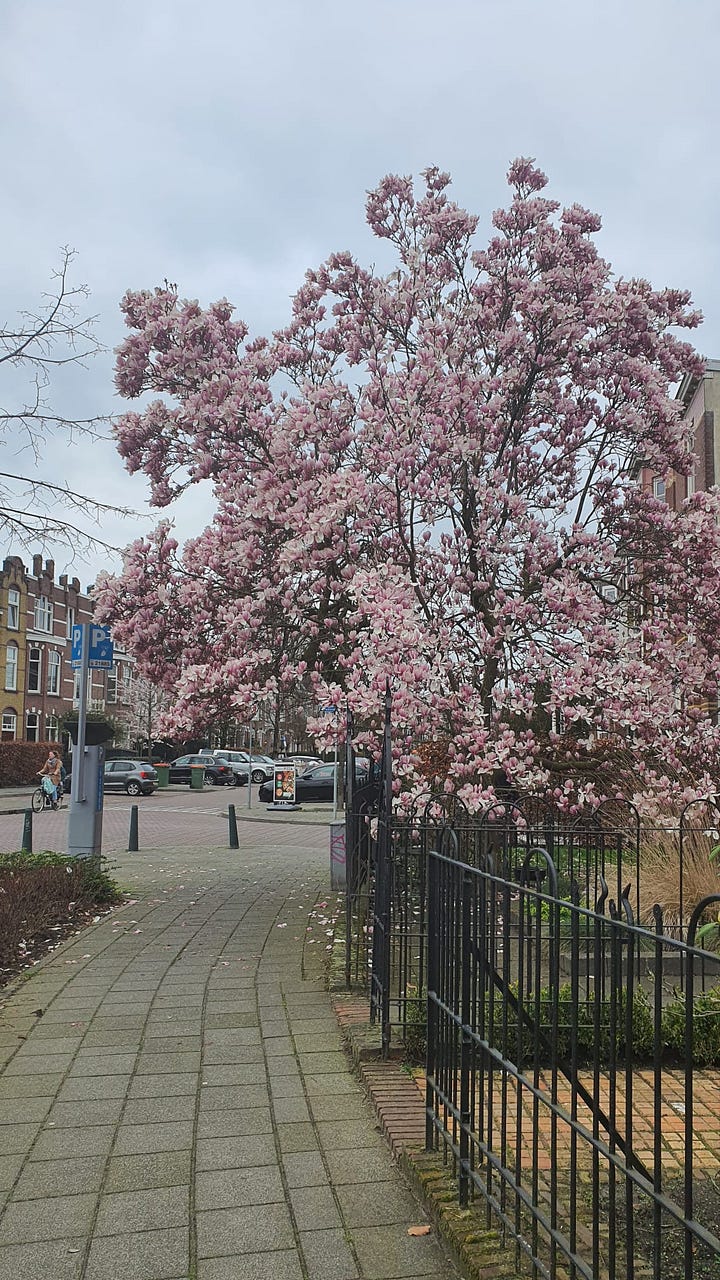

Spring has officially sprung here in the Netherlands - magnolias and cherry blossoms are in full bloom, white asparagus is the highlight on menus again, and everyone’s basking in the outdoors. My in-laws recently arrived from Singapore; they’d timed their visit to coincide with the tulip festival here, and we’ve just spent the past week roadtripping around Germany. It’s my first time in the country, but it has such a fairytale-like allure with the rolling hills and mist-shrouded castles. Some regions that we drove through reminded me of the otherworldly cover of The German Cookbook. My understanding of the cuisine is cursory but I’d read about their strong cake and bread culture, so we made it a point to make regular bakery stops whenever we could. Here’s just a fraction of the breads, pastries, and cakes that we ate on our trip:
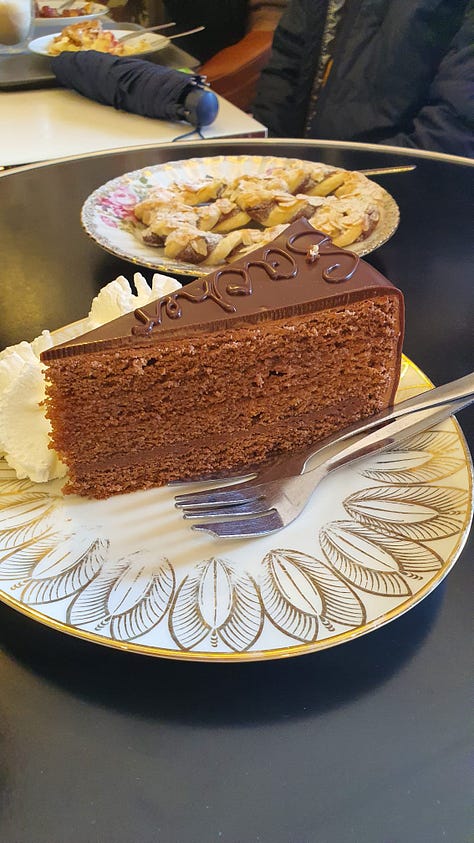
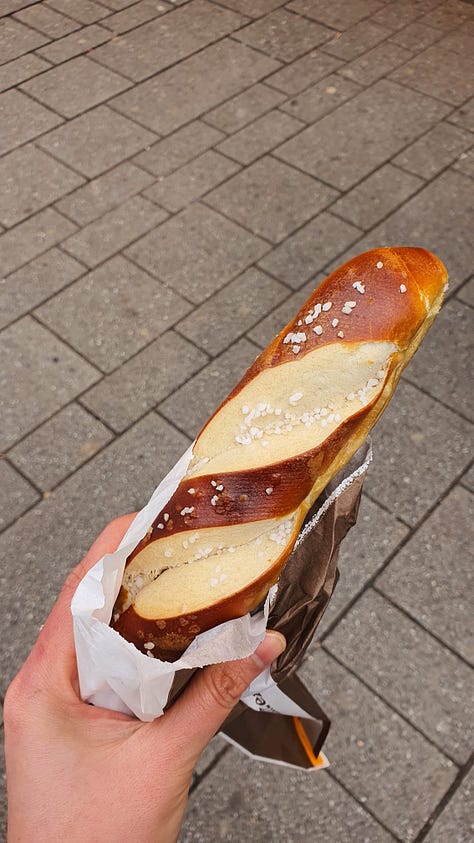
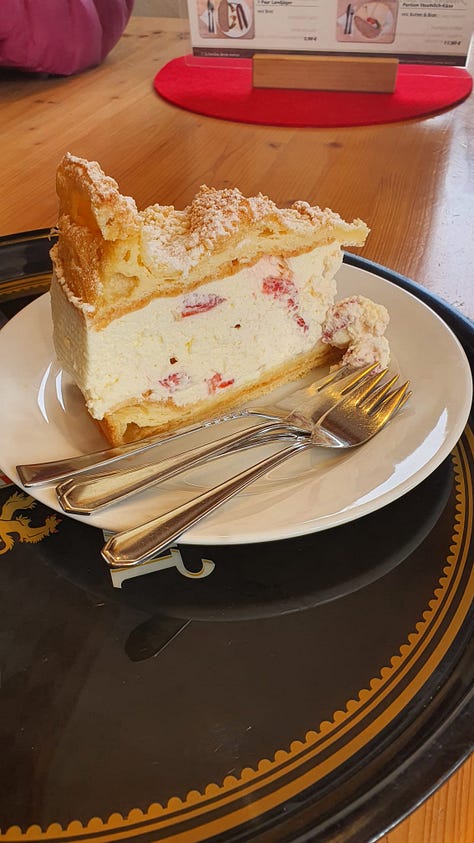
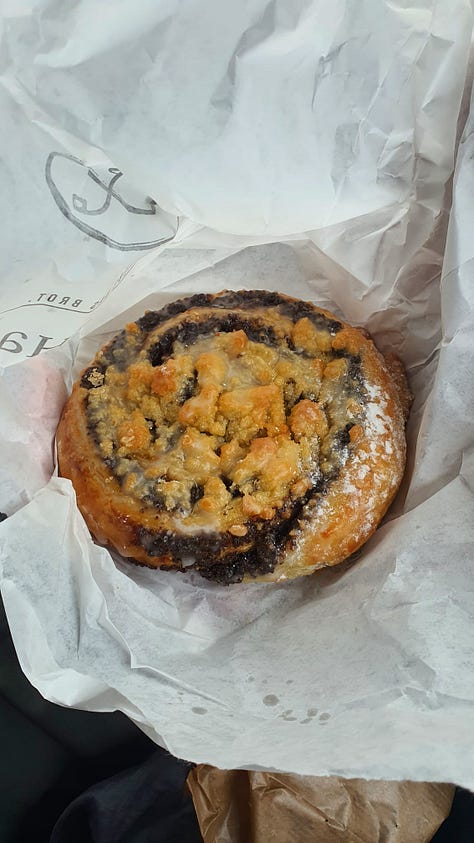
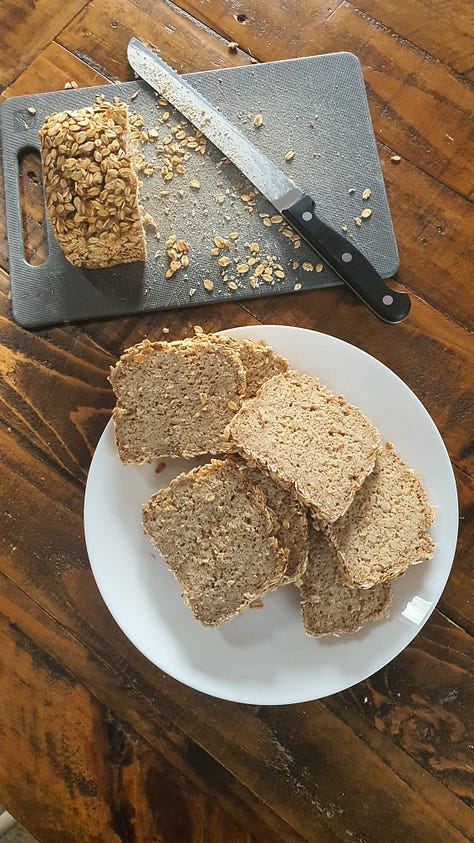
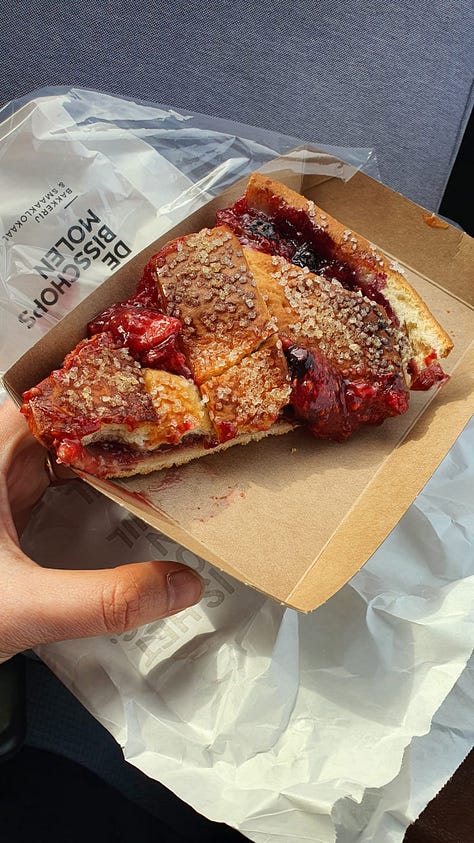
From top row, left to right:
Sachertorte: Light, velvety chocolate sponge layered with apricot jam and enrobed in a minimalist chocolate glaze.
Laugen: This is a genre of bread that is dipped in lye solution before baking; the method not only imparts an inimitable alkaline flavour, but also produces a dark mahogany crust. The same bread can be shaped in various ways - stange (rod), zopf (braid), roll, or the pretzel. We had the laugen stange.
Karparka: A featherlight choux pastry construction that belongs to Polish rather than German baking tradition that we encountered at a quaint cheese shop close to the Alps (Schönegger Käse-Alm + 24h Käseautomat). This particular version had whipped cream studded with strawberries in between the layers - very apt for spring.
Mohnschnecken: Poppy seed spiral bun. Because poppy seeds are expensive, Luisa Weiss, the author of Classic German Baking, writes that “whether they are processed into a gritty black filling or a creamier gray one is not just a difference in taste; it’s also a marker of wealth. The darker the filling, the less it has been adulterated with other ingredients”.
Oatmeal bread: Bread is a source of pride for Germans. When I met up with my aunt and her German spouse on this roadtrip, they explained that German bread is superior because of the emphasis on wholegrains and sourdough. This was a hefty but moist oatmeal loaf from Zeit Für Brot made with nothing but water, oats, oat starter, yeast, and sea salt. I’d love to return to try their other offerings.
Mixed berry fruit pie: It’s said that the lattice tops of pineapple tarts that we enjoy in Singapore were inspired by traditional Dutch fruit pies, a fun tidbit I remembered when we encountered the pies from Bisschopsmolen in Maastricht, a small city that lies close to the Germany-Netherlands border. The bakery is famed for grinding its flours with a historical watermill from the 7th century. While the use of cornstarch in the filling was rather heavy-handed, the pies were delightful nonetheless.



